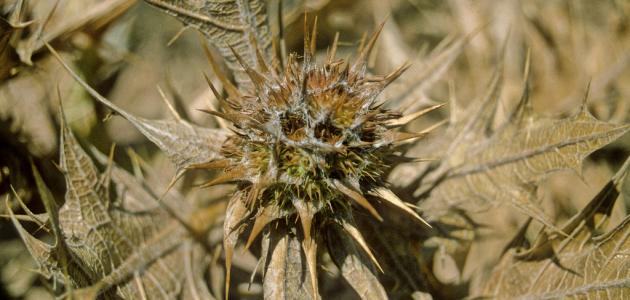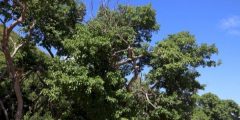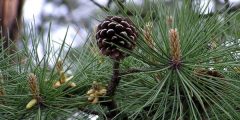Acob plant
Gundelia is a plant that belongs to the Asteraceae family. It is a perennial, thorny wild plant whose use dates back more than 2000 years. It has thick roots from which the plant grows every season. After the autumn rains and during the winter until late spring, the plant produces new roses. Its leaves are distinguished by their center, which appears in several colors, including: red, yellow, and purple. Its leaves are usually smooth. This plant grows to a length of about 0.4 m, and its flowers are bisexual. That is, it has male and female pollination organs at the same time, and it can be eaten when it grows in the spring, and it gradually becomes drier during the summer. Its leaves turn yellow and thorns appear on them. When its life ends, the plant separates from the root, and its seeds fly with the wind to grow in the crop of the following years. The Aqoob is sold in the markets of Jerusalem, Syria, Iraq, and Lebanon, and is collected in the wilds of Turkey.
Uses of Aqoob
Acupuncture is traditionally used to treat liver disease, diabetes, chest pain, stroke, heart disease, stomach pain, vitiligo, diarrhea, and bronchitis. It is also a laxative, sedative, anti-inflammatory, anti-parasitic, and helps remove water from patients suffering from... Splenomegaly, and many of the therapeutic benefits of the compounds found in it have been proven. For example, acacia is considered an antibacterial and antioxidant, and the pharmacological properties that have been observed indicate that these effects are closely linked to fighting infectious diseases, digestive system disorders, high blood pressure, and cancer. Aqoob is also used as a popular dish. This is done by frying its heads with olive oil, and then boiling them with lemon juice. As for the part that is underground, the Iranians use it as fresh food in many parts of the country.
Read also:The relationship between vegetation and wind
Places where spiders grow
The aqob grows in the semi-desert regions of Iran, Jordan, Palestine, Syria, Iraq, Syria, Azerbaijan, Armenia, and Anatolia. The temperate Asian regions of West Asia, such as: Cyprus, Egypt, Iran, and Turkey, are considered the original home of the aqob plant.









